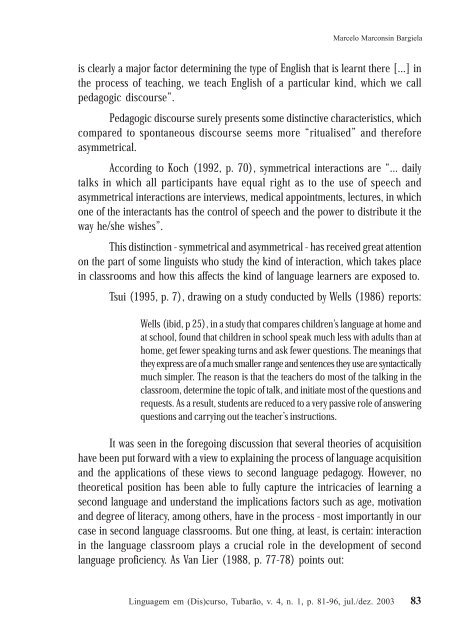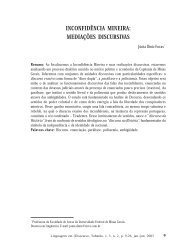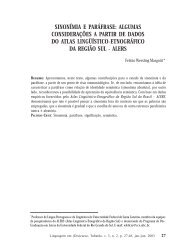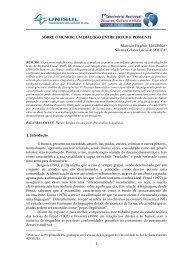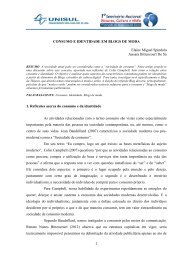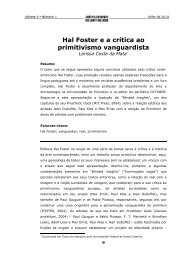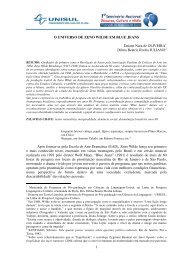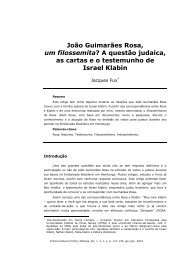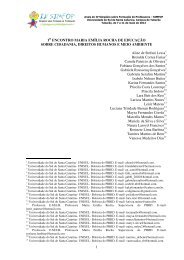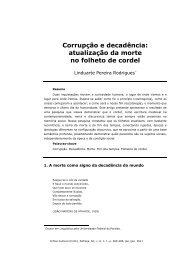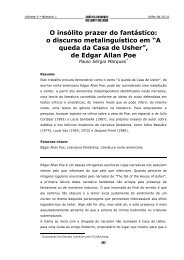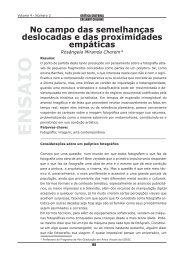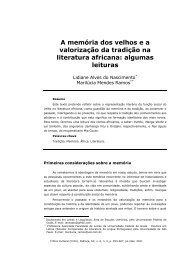TEACHER FEEDBACK AND LEARNERS' UPTAKE
TEACHER FEEDBACK AND LEARNERS' UPTAKE
TEACHER FEEDBACK AND LEARNERS' UPTAKE
You also want an ePaper? Increase the reach of your titles
YUMPU automatically turns print PDFs into web optimized ePapers that Google loves.
Marcelo Marconsin Bargiela<br />
is the clearly process a major of teaching, factor determining we teach English the type of of a English particular that is kind, learnt which there we [...] call in<br />
pedagogic discourse”.<br />
Pedagogic discourse surely presents some distinctive characteristics, which<br />
compared to spontaneous discourse seems more “ritualised” and therefore<br />
asymmetrical.<br />
According to Koch (1992, p. 70), symmetrical interactions are “... daily<br />
talks in which all participants have equal right as to the use of speech and<br />
asymmetrical one of the interactants interactions has are the interviews, control of medical speech and appointments, the power to lectures, distribute in which<br />
way he/she wishes”.<br />
it the<br />
This distinction - symmetrical and asymmetrical - has received great attention<br />
in on classrooms the part of some and how linguists this affects who study the kind the kind of language of interaction, learners which are exposed takes place to.<br />
Tsui (1995, p. 7), drawing on a study conducted by Wells (1986) reports:<br />
at Wells school, (ibid, found p 25), that in children a study that in school compares speak children’s much less language with adults at home than and<br />
home, get fewer speaking turns and ask fewer questions. The meanings that at<br />
much they express simpler. are The of a much reason smaller is that range the teachers and sentences do most they of use the are talking syntactically<br />
classroom, determine the topic of talk, and initiate most of the questions<br />
in<br />
and<br />
the<br />
requests. questions As and a result, carrying students out the are teacher’s reduced instructions. to a very passive role of answering<br />
It was seen in the foregoing discussion that several theories of acquisition<br />
have been put forward with a view to explaining the process of language acquisition<br />
theoretical and the applications position has of these been views able to to fully second capture language the intricacies pedagogy. of However, learning noa<br />
second and degree language of literacy, and understand among others, the have implications in the process factors - such most as importantly age, motivation in our<br />
case in the in language second language classroom classrooms. plays a crucial But one role thing, in at the least, development is certain: interaction of second<br />
language proficiency. As Van Lier (1988, p. 77-78) points out:<br />
Linguagem em (Dis)curso, Tubarão, v. 4, n. 1, p. 81-96, jul./dez. 2003<br />
83


